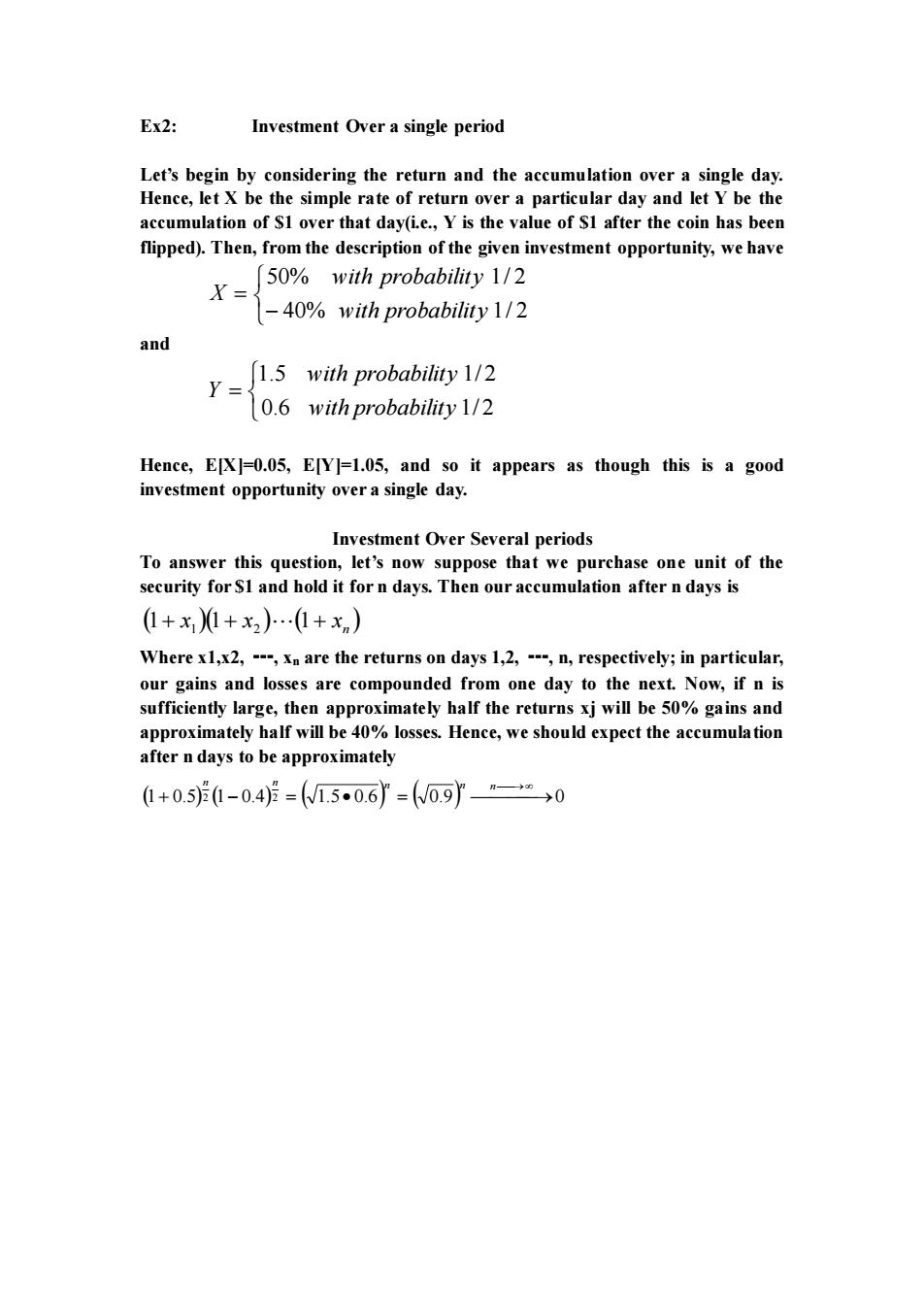正在加载图片...

Ex2: Investment Over a single period Let's begin by considering the return and the accumulation over a single day. Hence,let X be the simple rate of return over a particular day and let Y be the accumulation of SI over that day(i.e.,Y is the value of SI after the coin has been flipped).Then,from the description of the given investment opportunity,we have 50%with probability 1/2 X= -40%with probability 1/2 and (1.5 with probability 1/2 Y= 0.6 with probability 1/2 Hence,E[X]=0.05,E[Y]=1.05,and so it appears as though this is a good investment opportunity over a single day. Investment Over Several periods To answer this question,let's now suppose that we purchase one unit of the security for SI and hold it for n days.Then our accumulation after n days is (1+x)1+x2).(1+xn) Wherex1,x2,are the returns on days 1,2,n,respectively;in particular. our gains and losses are compounded from one day to the next.Now,ifis sufficiently large,then approximately half the returns xj will be 50%gains and approximately half will be 40%losses.Hence,we should expect the accumulation after n days to be approximately 1+0.51-0.45=1.50.6=0.9"m→0Ex2: Investment Over a single period Let’s begin by considering the return and the accumulation over a single day. Hence, let X be the simple rate of return over a particular day and let Y be the accumulation of $1 over that day(i.e., Y is the value of $1 after the coin has been flipped). Then, from the description of the given investment opportunity, we have − = 40% 1/ 2 50% 1/ 2 with probability with probability X and = 0.6 1/ 2 1.5 1/ 2 with probability with probability Y Hence, E[X]=0.05, E[Y]=1.05, and so it appears as though this is a good investment opportunity over a single day. Investment Over Several periods To answer this question, let’s now suppose that we purchase one unit of the security for $1 and hold it for n days. Then our accumulation after n days is ( )( ) ( ) n 1+ x 1+ x 1+ x 1 2 Where x1,x2, ┅, xn are the returns on days 1,2, ┅, n, respectively; in particular, our gains and losses are compounded from one day to the next. Now, if n is sufficiently large, then approximately half the returns xj will be 50% gains and approximately half will be 40% losses. Hence, we should expect the accumulation after n days to be approximately (1+ 0.5)2 (1− 0.4)2 = ( 1.5• 0.6) = ( 0.9) ⎯⎯ ⎯→0 n n n ⎯→ n n